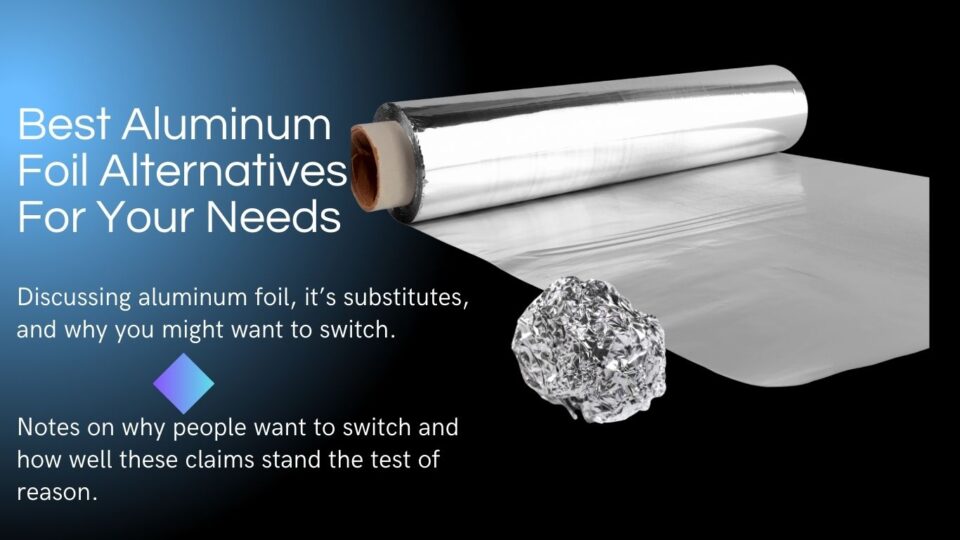When you want aluminum foil alternatives, It’s only natural to look for something that is as versatile and useful as the once-ubiquitous aluminum foil. It’s difficult to find something that takes over all roles of the aluminum foil and does it better. But, there are plenty of things that are as useful, but can be way better than foil in specific situations.
From packaging to cooking and storing food, aluminum foil can take on multiple roles. So, the choice of substitute often depends on the intended use and applications related to aluminum foil.
Depending on the uses, some aluminum foil alternatives are silicone containers, silpat, glass containers, clothing wrap, parchment paper, waxed paper, and butcher paper.
And since we’re on topic, rather than limiting ourselves to just the substitutes, we’ll also have a little discussion on some reasons why people look for aluminum foil substitutes and where things stand in relation to the use of aluminum in cooking.
But, first things first! Let’s start with the alternatives for aluminum foil we could use.
Table of Contents
Top Aluminum Foil Alternatives You Could Use
1. Silicone Storage Containers
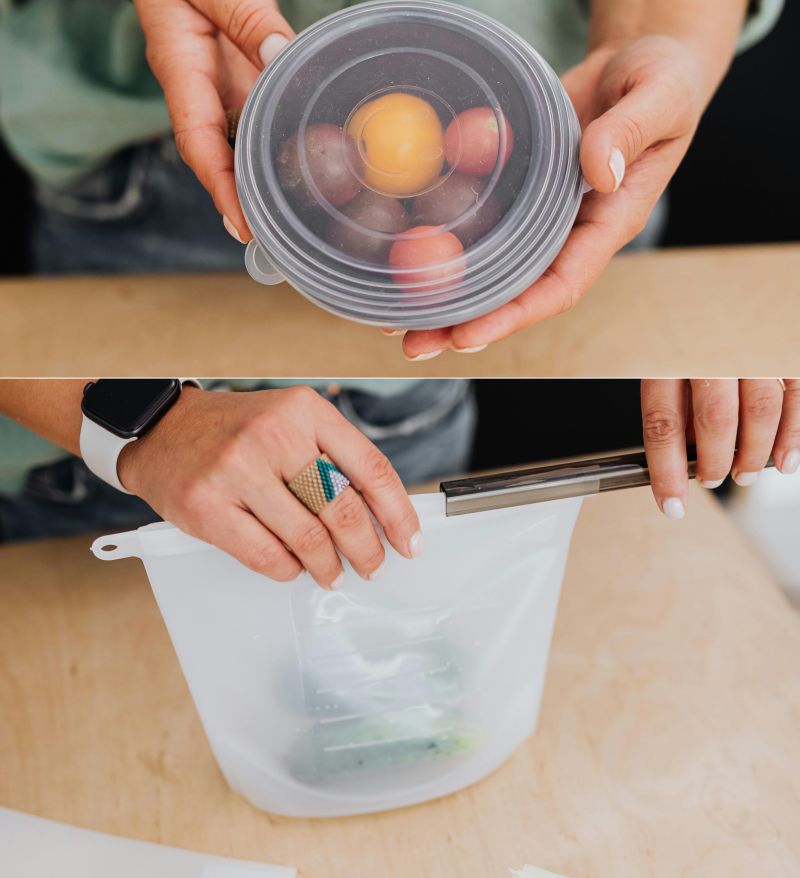
Silicone storage containers provide a wonderful storage solution in its role as an aluminum foil alternative. There is a very wide variety of these containers on the market, ranging from conventional and rigid box-like containers, to fairly flexible packaging that wraps and covers the food rather nicely.
Good quality storage containers hold the food rather well, preventing chances of spillage. Silicone is also rather easy to clean and reuse, thus reducing possibilities of waste. On that note, when using silicone, remember not to use abrasive cleaners that can potentially damage its surface.
In fact, the biggest advantage silicone has over aluminum foil is the reusability after packaging food.
Technically, aluminum foil is reusable too. Practically though, that can be rather difficult to achieve. As most of us see after using foil for packaging food, the foil ends up quite crumpled, difficult to straighten, and even more difficult to clean without it tearing.
So, silicone is often the more viable alternative in such situations.
2. Glass Containers For Storage And Cooking
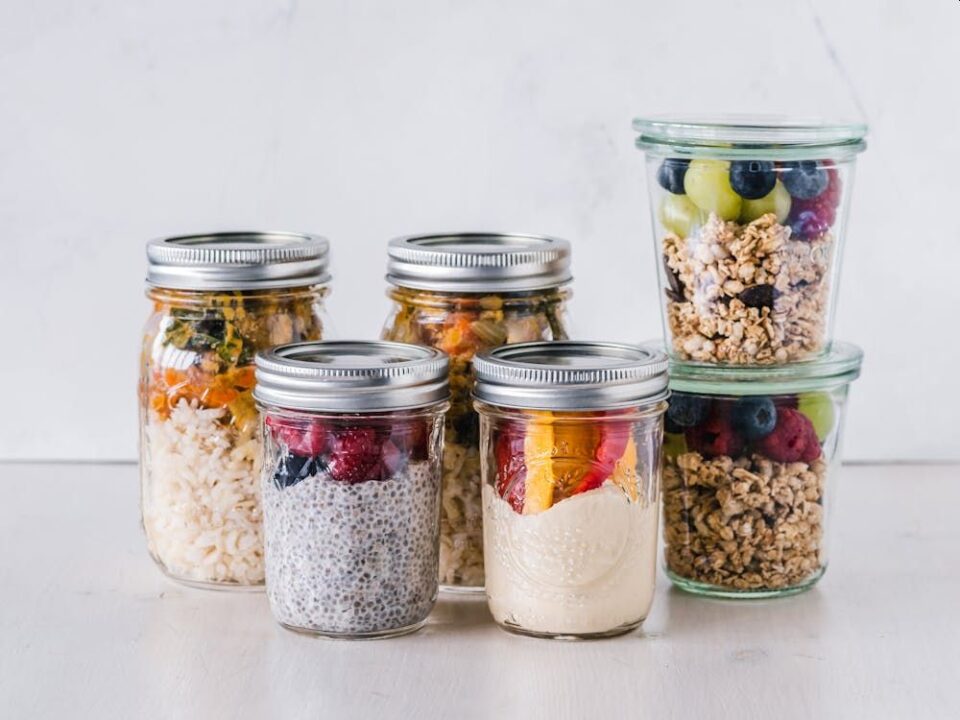
The old-fashioned glass storage containers or even mason jars and similar options are great for food storage. We’re all pretty familiar with glass containers. They look good, can store food easily, they don’t interact with food or affect its taste, and overall provide an excellent storage environment.
Of course, it isn’t without downsides. Glass is easy to break, is noticeably heavier than aluminum foil, and certainly isn’t as convenient if you want to carry food along.
For conventional food storage, the advantages that glass provides are excellent and tough to beat. Yet, it has only limited application as an aluminum foil alternative when you consider things like carrying your lunch or other food.
In some cases, glass containers that can handle heat are also useful for cooking. The oven is a clear use case where glass containers work fine. They can also work pretty well in other cooking needs like in smoking food.
3. Silicone Sheets And Mats For Baking (Silpat)

For baking needs, silicone sheets can be remarkable aluminum foil alternatives. These are colloquially often referred to as Silpat, though that is a specific brand. Other brands or businesses may also offer silicone sheets fit for baking purposes.
These silicone sheets or mats are easy to handle and clean, plus they can be reused several times. Good quality silicone sheets are also capable of withstanding heat. Most good-quality mats can handle temperatures up to 428 °F, while some purpose-built silicone mats can go higher.
Either way, these temperatures are good enough for use with most ovens.
4. Clothing Wrap For Storing Food
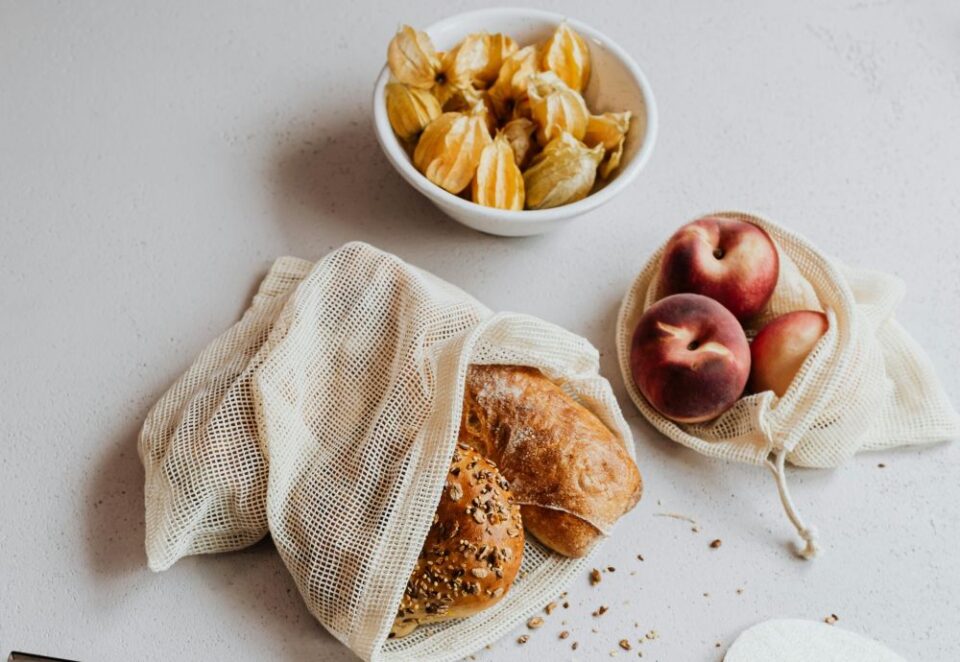
If you intend to use aluminum foil for storing food, the good old cloth will do the job just as well, and be environmentally friendly while doing it! Muslin is a pretty decent cloth that has been used for food purposes around the world for a very long time. This cotton-based fabric is as relevant today for food storage as it ever was.
It won’t be spill proof or waterproof, so you might want to add another suitable packaging if you want to carry the food with you. It will, however, be easy to use. Plus, it’s easy to clean and can be reused a lot of times. Overall, it’s remarkably cost-effective and eco-friendly in the long run.
5. Butcher Paper For Smoking Or Packing Food
The sturdy butcher paper is so named because it started its life and use as a material for packaging meat and fish at the butcher shop. It has since found use in multiple applications and is widely used in arts and crafts, posters, and even photography. Unfortunately, that has also ended up diluting the nomenclature and branding of this paper.
Any butcher paper you use as an alternative to aluminum foil should be FDA-approved for direct contact with food. Once you’ve got that covered, feel free to make the best of this remarkable paper.
In cooking, butcher paper is especially useful when smoking food, like meat or fish. It works far better than aluminum foil since it allows the meat to breathe, while also absorbing some grease. In similar conditions, foil can turn the meat (for example, brisket) soggy, since it doesn’t allow the moisture to escape.
In the same vein, butcher paper is also great for packaging and carrying foods. Of course, the paper isn’t waterproof or airtight, so you might want to add suitable packaging depending on the food and your personal requirements.
6. Wax Paper For Packaging
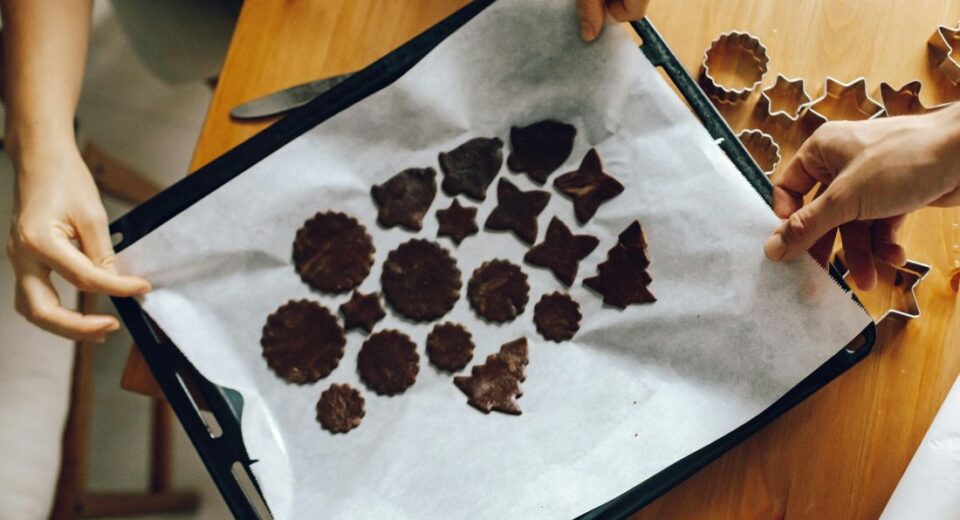
The good old wax paper is an excellent material to use for packaging food and it can potentially be a much better choice as compared to aluminum foil. Keep in mind, conventional wax paper is not intended for use with heat applications, even though it’s often confused with parchment paper, which we’ll soon discuss.
So, while the wax paper won’t be suitable for the oven or the smoker, it can be useful for packing and carrying the food, rather than having it wrapped in aluminum foil.
7. Parchment Paper
To be slightly crude, parchment paper is the more resilient sibling of wax paper. Though the two are often mistaken for each other, parchment paper is built to be sturdier and can handle heat, allowing its use in baking.
This paper usually gets a thin lining of silicone to better manage heat and for some waterproofing. It’s quite cost-effective and versatile in its uses. In some cases, it might be possible to reuse parchment paper. Although, it doesn’t quite lend itself well to washing, so reuse potential is limited and careful consideration to hygiene is necessary if you do intend to reuse it.
Discussing Aspects Of Aluminum Foil Substitution And Need For Alternatives
Since we’re on topic discussing aluminum foil alternatives, it might be fruitful to consider why we need such alternatives! There are some differing reasons, so let’s get to the discussion and see what the facts are, and where they lead us.
While wanting an aluminum foil substitute can be as simple as looking for another option, there are a few other ideas and opinions that guide people to choose alternatives.
Environmental Concerns Over The Use Of Aluminum
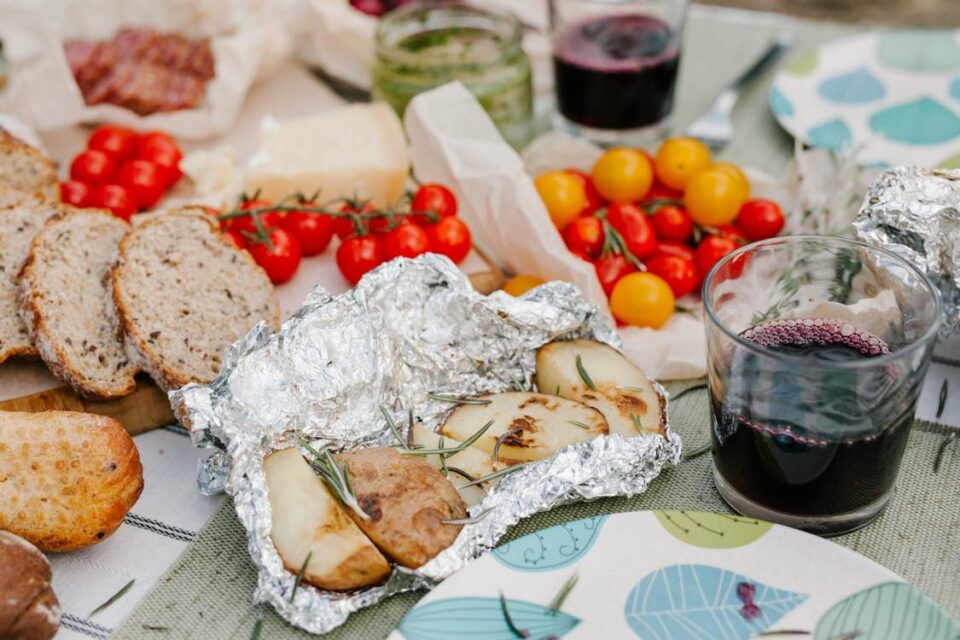
For many people, the environmental aspects of using aluminum foil is the key reason to look for an alternative. Aluminum is a metal mined after an intensive process. And aluminum foil, more often than not, is a single-use product. As you can very well see, its use is incredibly wasteful from an environmental standpoint.
To be clear, aluminum foil is recyclable and is indeed recycled quite well in several parts of the world. However, even there, the percentage can be quite low.
In the USA, the EPA uses industrial data from the aluminum association to reach recycling figures. According to the latest figures (currently, this number is at year 2018), the total recycling rate of aluminum containers and packaging was 34.9%. That basically includes everything aluminum packaging, including cans, containers, foils and more.
In fact, cans are the most recycled item, with the percentage at nearly 50%. Going by these numbers, a significant amount of the foil never sees recycling.
Europe has similar numbers, where according to the European Aluminium Foil Association, about 50% of all aluminium (aluminum) packaging is recycled. On that note, this is not a typo or spelling mistake – much of the world outside the USA spells aluminum as aluminium.
Overall, similar numbers can be expected for the USA and Europe.
As you can see, while things have improved over the years, aluminum foil may not quite be seen as an environmentally friendly choice.
Aluminum Foil, Utensils, And Leaching
While writing this article, another point that came to my notice for people looking at aluminum foil alternatives was the belief that it can be detrimental to health.
Before I go into the details, let me point out I’m not a scientific researcher or physician, so I can’t give medical advice, so I’m just going to present the information I found.
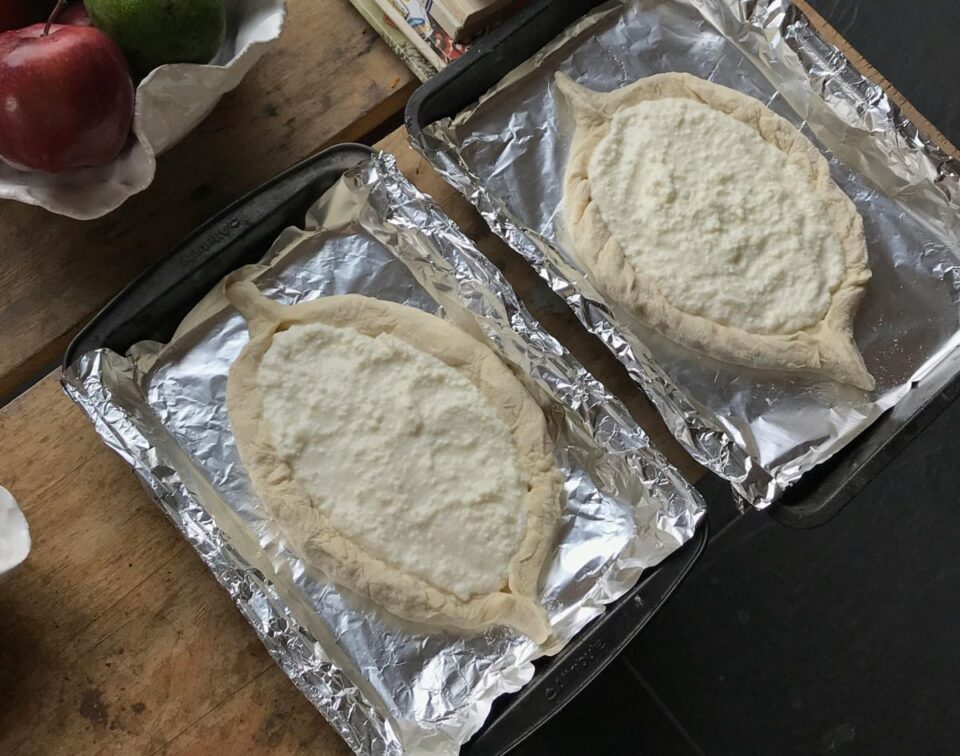
So, the belief largely is that when you use aluminum foil (or in some cases, utensils) for cooking or packing food, some aluminum can leach into your food, and that is harmful.
These claims usually list research or studies like this and a different study like this. Both these studies found that cooking or baking food wrapped in aluminum foil causes a significant increase in the amount of aluminum in the cooked food.
However, if we’re considering simply packaging or wrapping food in foil, there doesn’t seem to be much of a problem.
Now that we’re done with the claim, let’s see how well it stands on its merit.
Apparently, not so well!
There doesn’t seem to be any major food safety organization or administration around the world that warns against the use of aluminum foil. The foil is generally considered food safe, and therefore can be utilized as necessary.
However, these agencies do realize that the intake of a significant amount of aluminum can have toxic effects on humans. Generally, though, the human body is quite capable of getting rid of the small amounts of aluminum we encounter in our food or its addition through cooking methods.
Yet, if you want to lower the risk of aluminum’s presence in your food while using aluminum foil or cookware, the following ideas can be useful:
- Do not use aluminum foil (or utensils) for cooking or storing acidic foods (examples can be tomato sauce or other foods with tomatoes, some foods with lemon, and so on).
- Do not use aluminum foil for high-heat cooking.
- Consider the use of other materials and utensils for cooking.
Overall, it seems fairly simple to avoid any risks that can be associated with the use of aluminum foil.
The Marketing Angle And Its Nefarious Working

I think the discussion on aluminum leaching into food wouldn’t be complete without some discussion on some shady marketing efforts that fuel the rumors for their own gain.
I’ll point out that I’m not writing this in defense of aluminum foil. Rather, it’s a way to challenge the misinformation that’s being spread by marketers with special interests.
In my research, I noticed a pattern of two truths with a tenuous correlation often repeated on the internet and other outlets of information. And then there’s a lie, usually for personal gains. These truths are:
- Aluminum can leach from foil into food.
- Aluminum is toxic and ingesting it can cause several problems.
If you look solely at these two statements above, it’s only natural to panic and decide to skip aluminum. However, there are more truths to consider. These are that only a miniscule amount of aluminum can find its way into your food and the human body removes most of the undesirable aluminum from the body.
It’s worth remembering that the reason aluminum cookware is used in the first place is because this metal can be quite inert and doesn’t have a major response to most foods. Conventional wisdom suggests not using acidic foods with aluminum, and if you’re taking that precaution and not relying solely on aluminum utensils or foil for food all the time, you should be in the clear.
Additionally, most food agencies around the world see aluminum as safe for use with cooking and food.
So, where is the marketing angle in all this? Well, it’s usually the third part after the two truths, and it’s generally a lie.
- Aluminum is bad, so use our food utensils that are perfectly safe — this is a lie!
Let me explain, for most cooking materials, the term “safe” simply means that any material they leach into food is seen as “safe” by regulatory authorities. What these charlatans don’t mention is that aluminum foil is also “safe” under the same condition where their product is “safe.”
Generally speaking, the food cooking utensils we use are very likely to leach some material into our food. I won’t go into individual details since that’s beyond the scope of our article, but stainless steel, silicone, enamel-coated utensils, etc. are all susceptible of leaching some harmful materials into food.
However, these are generally seen as acceptable or safe, as far as regulatory authorities are concerned.
My suggestion would be to not give in to the shady marketing strategies that many businesses use to sell their own products. Because often, these products aren’t without their own risks.
Putting It All Together
After this large discussion on aluminum foil, it can be useful to try and condense it for easier understanding.
If you want to ditch the use of aluminum foil for environmental reasons, you are on solid ground. Using alternatives is indeed likely to be the more useful choice.
If you want to skip aluminum foil because someone told you it’s bad for your health, you may want to recheck your information for better clarity so that you can make an informed decision.
Using The Right Aluminum Foil Alternatives For You
Versatile as it is, aluminum foil is not irreplaceable. We’ve discussed the various aluminum foil substitutes you can use and what function they cover best. Plus, since this is a big issue, we’ve also considered the reasons why people might want to look for foil alternatives, and where things stand with such issues.

